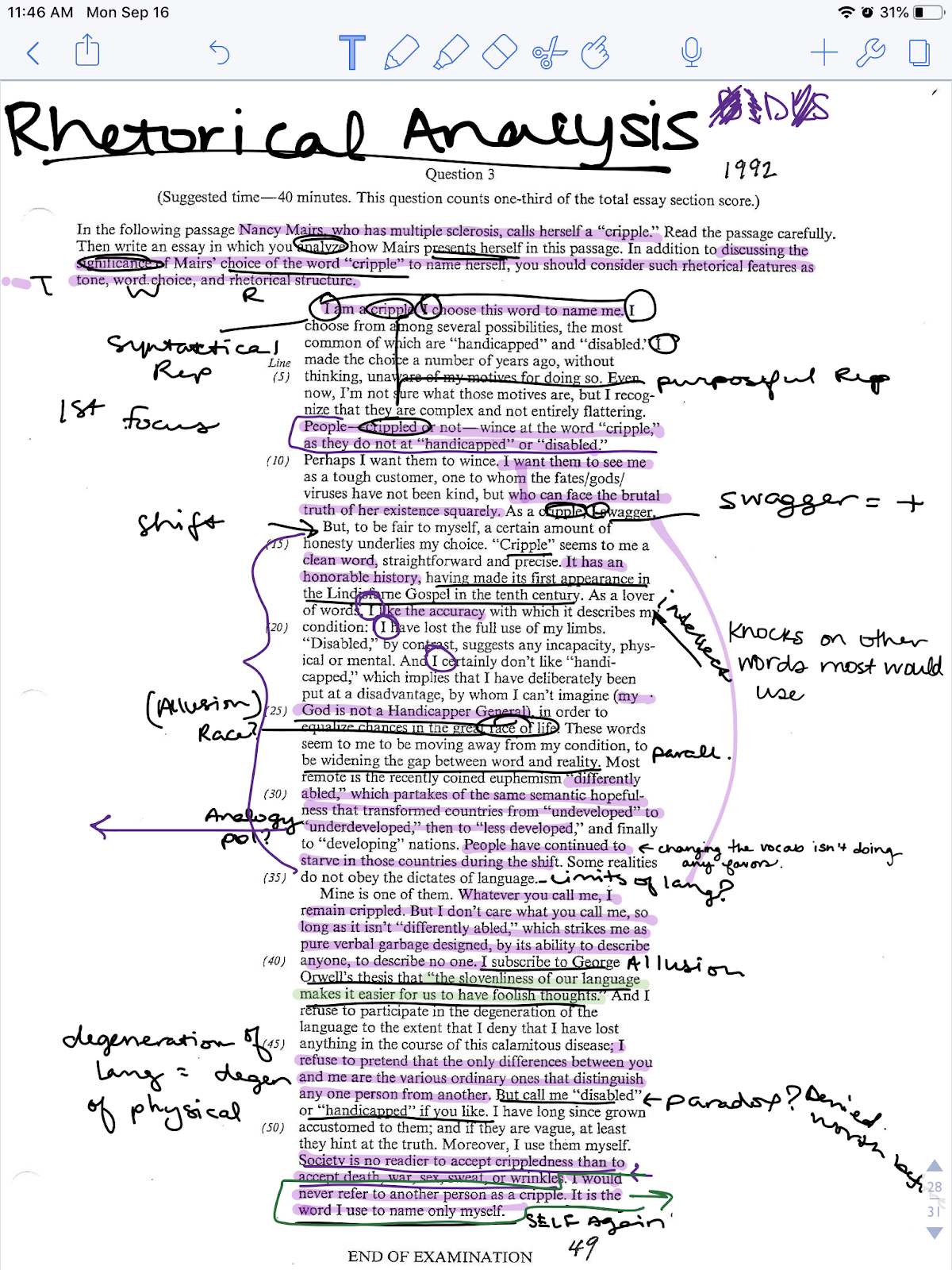How to Answer AP Lang Rhetorical Analysis FRQs
3 min read•july 11, 2024
Stephanie Kirk
AP English Language ✍🏽
224 resourcesSee Units
Question 2: The Rhetorical Analysis FRQ
The AP Lang exam's free-response section is a writing section comprised of three essays within 2 hours and 15 minutes. The second essay is on Rhetorical Analysis, in which you look at a variety of nonfiction sources - newspaper articles, essays, letters, et cetera - and make connections between the author's rhetorical strategies and techniques, their central arguments, and their overall purpose.
Here's an overview on what you should expect and do in preparation for the AP exam!
📖 General Information
Since the essays are 55% of your total score, it is helpful to have a plan before game day. Aim for around 40 minutes on reading this nonfiction text, creating a quick outline, and writing an essay that analyzes the author’s choices and their impact on meaning and purpose. While the exact prompt will vary, all prompt will follow this general description.
Source: For more information on the variety of FRQ 2 prompts, check out this list of past AP Lang free response questions.

🔨 Break Down the Process
🙋♂️ Before the Test
Here at Fiveable, we recognize the essays can be tricky. For that reason, we suggest the following process to help you earn the FIVE you want on the AP Exam.
- Know what to expect. According to the 2019-2020 Course and Exam Description,
- Learn a few key devices. While naming devices isn’t required, it is helpful to know a few rhetorical terms so you can recognize them in the stimulus text and write about them clearly in your essay. Learning the device also comes with knowing the effect it SHOULD have, and that means it will be easier for you in building your essay -- if you know WHAT is being done and HOW it should impact the audience, the WHY should be easy to find. We created this list of 40 rhetorical devices for AP Lang to help you out!
- Practice Rhetorical Analysis. You are going to be doing this in class, but have you considered the rhetorical situation of songs you love? Practice RA outside of class in places where you see it -- songs, commercials, discussion with other people. The rhetoric of songs can be fun because you can generally look up the author’s story of the song after you have made your own prediction.
- Use the Rhetorical Precis. The RP can be a great tool for your introduction paragraph because it offers a tool to organize the tone, purpose, and intended audience right from the start. Next, it outlines the text, the rhetorical facilities employed, and the impact of the text as a whole.
❗ During the Test
- BAT the prompt to create your writing plan. When writing the prompt, the College Board will give you plenty of information to jumpstart your analysis of the rhetorical situation. Look for any background you are given to help set the stage for the text, purpose, audience, or anything else. Next, pay attention to the advice you are given about what to do and how to do it. Finally, process the task at hand. Make sure you understand the question, including any implied sections you will need to answer to completely and correctly respond.
- Read and annotate the text.
- Clear flow with headings and subheadings.
💯 After the Test
- Don’t post anything about the content of the exam.
- Post on social media and let us know how prepared you felt.
- Celebrate your success!
FRQ #2 on Rhetorical Analysis might seem intimidating at first, but once you know your rhetorical devices, do some practice essays, and sleep tight the night before test day, you are going to be more than ready to take on the writing section of the AP Lang exam!
Browse Study Guides By Unit
🤔Exam Skills
🥇Unit 1 – Claims, Reasoning, & Evidence
🗂️Unit 2 – Organizing Information for a Specific Audience
👀Unit 3 – Perspectives & How Arguments Relate
🔚Unit 4 – How writers develop arguments, intros, & conclusions
🎀Unit 5 – How a writer brings all parts of an argument together
👥Unit 6 – Position, Perspective, & Bias
🥊Unit 7 – Successful & Unsuccessful Arguments
😎Unit 8 – Stylistic Choices
😈Unit 9 – Developing a Complex Argument
📚Study Tools

Fiveable
Resources
© 2025 Fiveable Inc. All rights reserved.